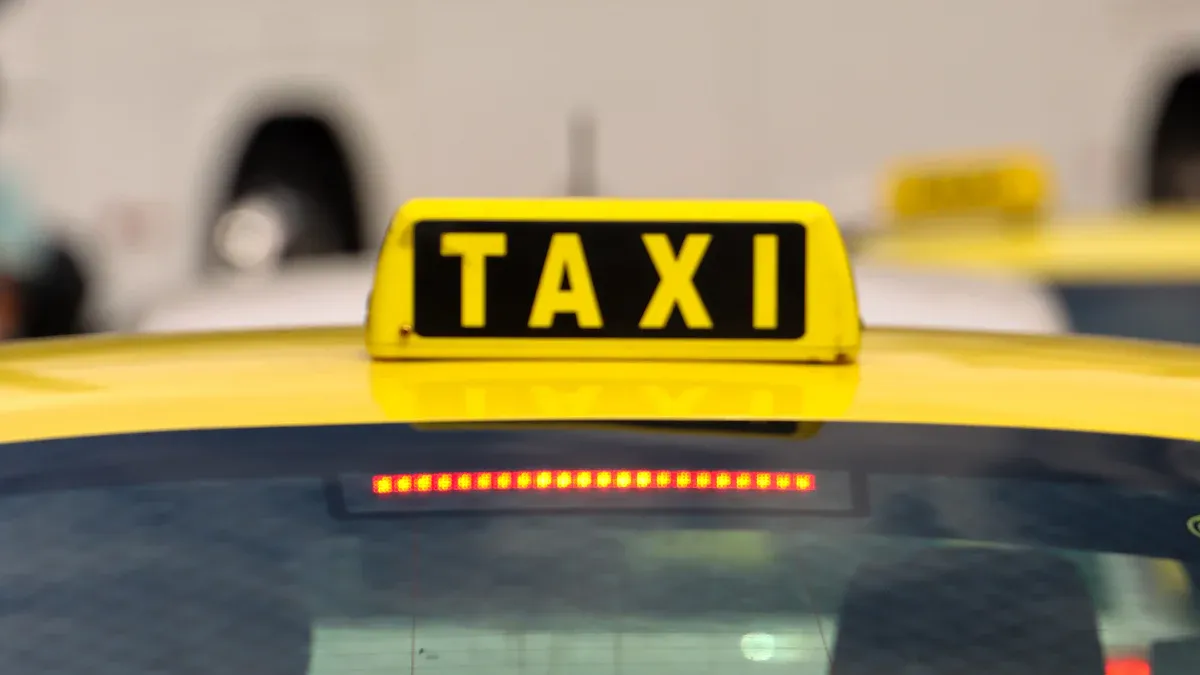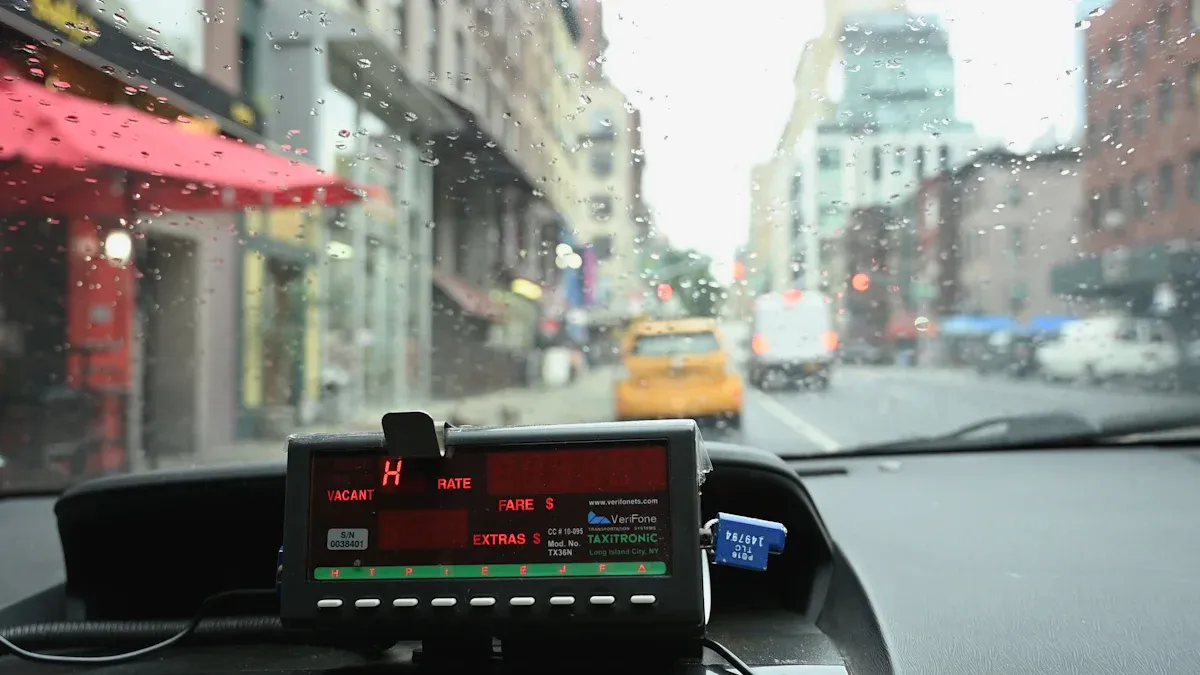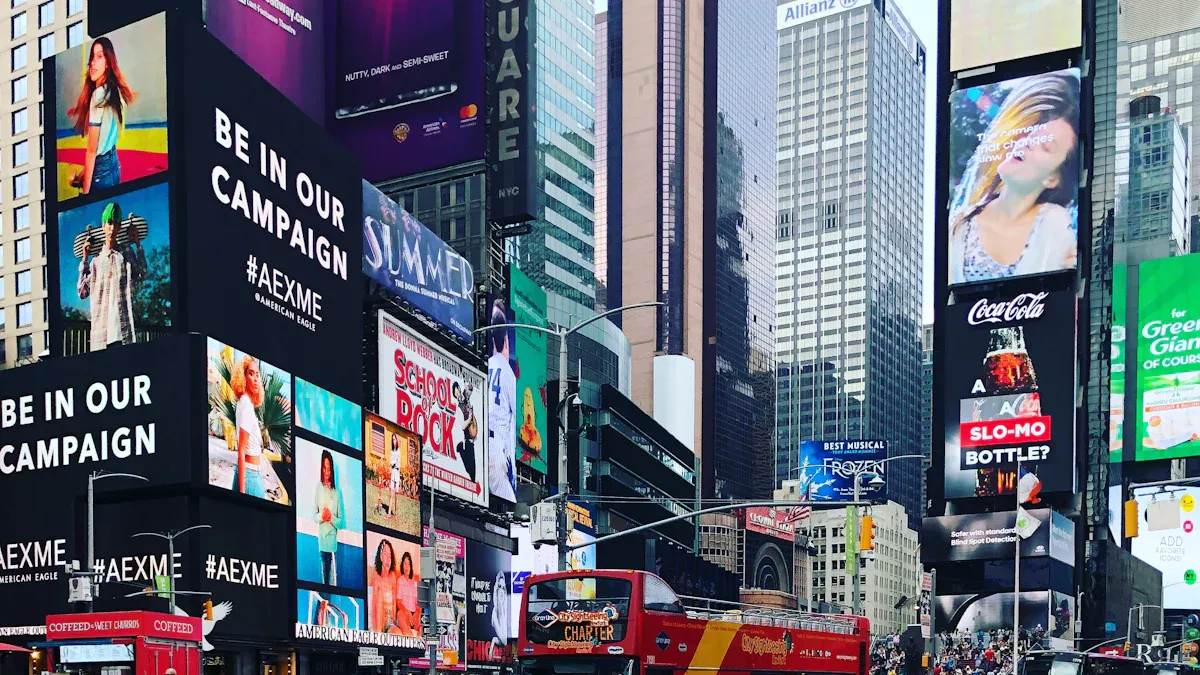
You can expect the average cost per mile taxi ad display pricing to reach about $0.33 in 2025. This average gives you a clear way to plan your taxi advertising budget. When you use the average, you know what you might pay for each mile your taxi ads travel. If you want to reach more people, tracking the average helps you see the real value of each taxi ad. The average cost can guide your choices and set clear goals for your taxi ad campaigns.
Knowing the average lets you measure your return on investment and make smart decisions about taxi advertising.
Key Takeaways
The average cost per mile for taxi ad displays in 2025 is about $0.33. This helps you plan your advertising budget with ease.
Different ad formats like static and digital rooftop ads have different prices. They also reach different numbers of people. Pick the one that matches your goals and budget.
Things like location, fleet size, ad format, and campaign length change the average cost per mile. These things also affect how well your campaign works.
Taxi ads have special benefits like moving around, AI route targeting, and longer viewer attention. These make them a smart choice compared to other ad types.
Use analytics and tracking tools to see how far your taxi ad campaign goes. You can also check how much money you make back. Change your plan to get better results.
Cost per Mile Taxi Ad Display Pricing

Average Pricing 2025
In 2025, the average cost per mile for taxi ad displays is about $0.33. This number helps you plan how much money to spend on ads. To find your total cost, multiply $0.33 by the miles your taxis drive. If your taxis go 10,000 miles in a month, you will pay about $3,300. The average makes it easy to compare different ad choices. You can use this number to see if your ad plan saves money. Many people use the average to set goals and check if their ads work well. The average cost per mile shows you what your money is really buying.
Pricing by Ad Format
There are different types of taxi ad formats you can pick. Each one has its own price range. The most popular are static rooftop ads and digital rooftop ads. Here is a table that shows the usual monthly prices for each type:
Ad Format | Typical Price Range (per taxi per month) | Notes |
|---|---|---|
Static Rooftop Ads | $100 – $200 | Exclusive ad space |
Digital Rooftop Ads | $120 – $180 (average ~$150) | Shared space with multiple advertisers |
Static rooftop ads show one message on each taxi. Only your ad is on the taxi, so you get all the space. Digital rooftop ads let you use moving pictures or change your ad during the day. You share the space with other ads, but more people might see your ad. In some places, like London, digital taxi screens can start at about £1,000 each month. The price changes if you update your ad a lot or pick special times to show it. When you look at different formats, always check the average cost per mile to see which one is best for you.
What’s Included
When you pay for cost per mile taxi ad display pricing, you get more than just a spot on a taxi. The price covers many things:
The display screen, which can be static or digital
The pixel pitch of the screen (smaller pitch means better quality and higher price)
The refresh rate for digital screens
The cabinet material, like die-cast aluminum or iron
Custom shapes or sizes if you need them
Power use and ways to protect the display
How many taxis you use
How long your ad campaign lasts
You also pay for making and putting up the ad. Some companies add maintenance and help in the price. The cost per mile depends on how far your taxis go and how long your ads run. If your taxis drive more miles, your average cost per mile gets lower. If you run your ad longer, you might get a better price. Always ask what is included before you agree to anything. This helps you know the real average cost per mile and keeps you from getting surprised.
Tip: Always check if your package has ad production, installation, and support. This helps you compare the average cost per mile with other companies.
Factors Affecting Cost

Location
Where your taxi ads run changes the average you pay. Big cities like New York or Los Angeles have more people and more traffic. Your taxi will drive through busy streets, so your ad gets seen by more people. This can make the average higher. Smaller cities, such as Newark or Seattle, may have lower prices. The average in these places can be less because taxis drive fewer miles or reach fewer people. You should always check the average for your city before you start your campaign. Some regions have special rules or fees for taxi ads, which can also change the average.
Fleet Size
The number of taxis you use in your campaign affects the average. If you use a small fleet, you might pay more per taxi. Large fleets can help you get a better average because companies often give discounts for more taxis. For example, if you use 10 taxis, your average per mile might be higher than if you use 100 taxis. More taxis mean your ad travels farther and reaches more people. You can plan your budget by looking at the average for different fleet sizes.
Ad Format
The type of ad you choose for your taxi changes the average. Some formats cost more because they use new technology or offer more ways to show your message. Here is a table that shows how the ad format affects the average monthly price per taxi:
Ad Format | |
|---|---|
Static Taxi Top Ads | $250 – $500 |
Digital Taxi Top Ads | $350 – $600 |
Seat Back Screens | $5,000 – $20,000 |
Digital and seat back screens use advanced displays. These formats raise the average because they give your ad more visibility and can show moving images. Static taxi tops have a lower average, but you still reach many people. You should pick the format that matches your goals and fits your budget. The average for each format helps you decide.
Campaign Duration
How long your taxi ad runs changes the average you pay. Short campaigns may have a higher average per mile because setup costs get spread over fewer days. Longer campaigns often lower the average because you get better rates for more time. If your taxi ads run for several months, you can ask for a lower average. You should plan your campaign length to get the best average for your goals.
Tip: Always compare the average for each factor before you choose your taxi ad plan. This helps you find the best value and reach more people.
Trends and Comparisons
Yearly Changes
You may notice that the average cost for a taxi ad display in 2025 stays close to $0.33 per mile. This average has not changed much from past years. In 2019, the average was also about $0.33 per mile. Many cities keep the average steady because taxi fleets and ad companies want to attract more advertisers. Some places may see a small rise in the average, but most cities hold the average price to help you plan your budget. If you compare the average cost now to five years ago, you see that taxi ad displays remain a stable choice. You can trust the average to help you set your campaign goals. When you look at the average for other years, you see that taxi ads give you steady value.
Note: The average cost per mile for taxi ads in 2025 helps you predict your spending and compare it to past years.
Taxi Ads vs. Other Formats
Taxi ad displays stand out from other out-of-home advertising options. You get a moving ad that travels across the city, not just a fixed sign. The average reach for a taxi ad is higher because taxis move through busy streets and reach many neighborhoods. In New York City, a single taxi ad display can reach over 500,000 people each day. The average view time for a taxi ad is four times longer than a static billboard because taxis often sit in traffic. This gives your ad more chances to get noticed.
Taxi ads use AI to pick the best routes. Your ad can show up near stores or events where people want to buy your product. This dynamic targeting is something only taxi ads offer. Other formats, like digital billboards or bus stops, stay in one place. They give you broad exposure, but they cannot move or change routes. Both taxi ads and other digital OOH formats let you update your ad in real time, but only taxi ads combine this with mobility. You get more value for your average spend because your ad adapts to the city’s flow.
Here is a quick comparison:
Feature | Taxi Ad Displays | Other OOH Formats |
|---|---|---|
Mobility | Yes | No |
Yes | No | |
Average Reach | High | Medium to High |
Dwell Time | Extended | Standard |
Real-Time Updates | Yes | Yes |
You can see that taxi ads give you a unique mix of movement, targeting, and high average reach. This makes the average cost per mile a smart investment for your campaign.
Value and ROI
Reach and Impressions
When you buy a taxi ad display, you want to know how many people will see it. Taxi ads reach lots of people because taxis drive around busy cities all day. Both drivers and people walking can see your ad. Digital taxi tops use bright lights and GPS to show your ad in the best places. This helps your ad show up where people will notice it most. Taxi ads often get more views than other moving ads.
Here is a table that compares different taxi ad formats and how many people they reach:
Taxi Ad Format | Pricing Range (USD) | Reach/Impressions Insight |
|---|---|---|
Taxi Top (Static) | $200 – $500 | High impressions in urban areas; mobile exposure to pedestrians and drivers. |
Taxi Top (Digital/LED) | $400 – $600 | Enhanced reach with dynamic content; targeted ads increase impressions. |
Taxi Interior (Digital) | $5,000 – $65,000 per fleet | Captive audience inside taxis; repeated exposure for longer ad spots. |
Taxi Full Wrap | $950 – $1,950 | High visibility through full vehicle coverage; eye-catching and mobile. |
Taxi ads are special because they move and use digital features. People see your ad again and again as taxis go to different places. Taxi ads use 4G, 5G, and Wi-Fi to change your message right away. This helps you reach more people and keep your ad new.
Taxi ads let you be seen in the city in ways digital-only ads cannot. You get movement and lots of people see your ad.
ROI Potential
You want your taxi ad campaign to give you good value for your money. The average cost per mile helps you see if you are getting that value. In 2025, advertisers use smart tools to check how well their taxi ads work. You can see live data about how many people see your ad and where taxis go. AI and machine learning help you show your ad to the right people in the right places. This makes your money work better.
To check ROI for your taxi ad campaign, you can:
Use analytics tools to count how many people see your ad.
Add QR codes to your taxi ads to see who interacts with them.
Change your campaign quickly if you see something is not working.
Compare your ad money to the average taxi fare or how much you earn per trip.
Taxi ad companies often give you online dashboards. You can check how your campaign is doing any time you want. Programmatic buying lets you set up your ads to run by themselves, so your average cost per mile works harder. When you use these tools, you can see clearly how well your campaign is doing.
Tip: Always check your average reach, impressions, and money earned per trip to see if your taxi ad campaign is working for you.
You see the average cost per mile for taxi ad displays in 2025 stays steady at $0.33. This average helps you plan your taxi campaign budget and measure results. The average changes with location, fleet size, ad format, and campaign length. You get strong value when you target high-traffic areas and use both taxi top and interior ads.
Taxi ads give you unique mobility and visibility, making the average a smart investment.
Track your taxi routes and impressions to check ROI.
Choose taxi types that match your brand.
Run your taxi campaign for at least 12 weeks to boost average brand lift.
Use agencies for expert taxi ad planning.
Design simple, bold taxi ads for quick impact.
FAQ
What does the average cost per mile mean for taxi ad displays?
The average cost per mile shows how much you pay for every mile your ad travels on a taxi. You use this average to plan your budget and check if your ad campaign works well.
How do you calculate the average cost per mile for a taxi ad campaign?
You find the average by dividing your total ad spend by the number of miles your taxi drives. This average helps you see if your campaign gives you good value.
Why does the average cost per mile matter for advertisers?
The average cost per mile lets you compare different ad options. You use the average to see if your money brings enough reach. This average helps you set goals and measure success.
Can the average cost per mile change during a campaign?
Yes, the average can change if your taxi drives more or fewer miles. You should track the average during your campaign. This helps you adjust your plan for better results.
What factors affect the average cost per mile for taxi ads?
Many things can change the average, such as city, fleet size, ad format, and campaign length. You should check the average for each factor to find the best plan.
